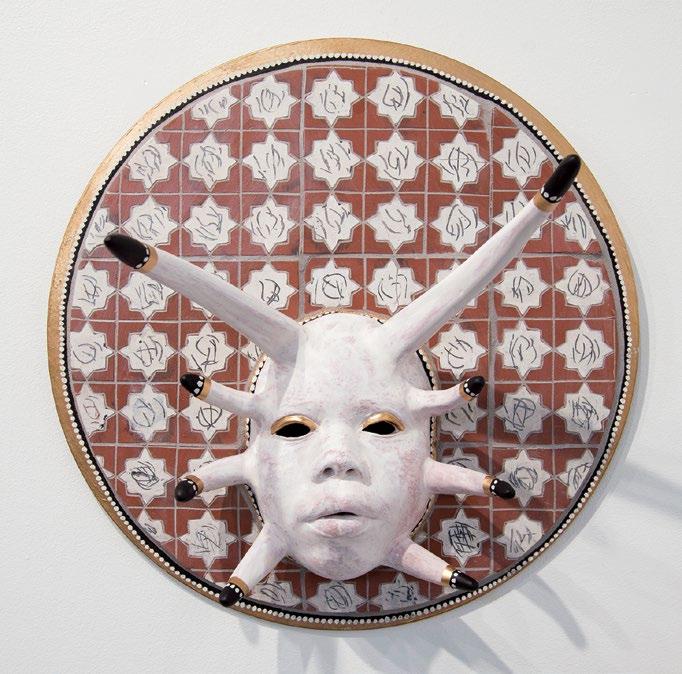AN ENGINEERED APPROACH Douglas McDowell
Editors: What is your usual routine for a day in the studio or throughout a making cycle? Douglas McDowell: I do most of my work at the College of Lake County ceramics studio, in Grayslake, Illinois. First, I see what pieces have been bisque fired. I try to have work in all stages of completion (leather hard, bisque, and fired). This gives me flexibility and allows me to schedule priorities. My goal is to have some pottery in every firing done at the studio. When I am throwing, I usually make 4–6 pieces at a time. I also make some one-of-a-kind pieces to see if I like a certain form. Most of my prep work for glazing is done at home. Eds: What role do color and pattern play in your work? DM: My goal is to have a pot be colorful, distinctive, and rich looking (as in luxurious, gorgeous, and exceptional). Since I want the design/pattern to pop, my goal is color separation. I also like to use the raw clay to accent the piece. Most of my work has a pattern, but sometimes I make pieces that are not geometric, just to have a change of pace. Although the patterns are two dimensional, they sometimes appear to be three dimensional. Eds: What is the most challenging aspect of working in clay? DM: My biggest challenge is to make a pattern or new design work with the piece. I make test tiles for each clay body and test new glazes at cone-6 oxidation and cone-9 reduction to see what the color looks like and to see if it runs. I participate in the Empty Bowls program at the studio and usually make about 30+ bowls per semester to donate and try out new glazes and designs on them. The best results graduate to larger pieces (it is better to make a small error than a large one). Usually a design or glaze pattern will transfer well, but sometimes it doesn’t fit the piece as I had envisioned. The result might be a nice surprise; I am always optimistic! Eds: What research and sources do you reference prior to and when creating your work and why? DM: We are all products of our experiences, environments, and genes. I was born with geometry in my head/body (in my firstgrade picture, my shirt had a geometric pattern!). I am an engineer by training and have always used math and precision in my work. I am also a hiker (Appalachian Trail, 2010–2018, and Camino de Santiago, 2019) in the summer, and I do find some designs and patterns when I am on the road. I watch YouTube a lot to virtually 34
www.ceramicartsnetwork.org
Above: Sunflower Yellow Planter, 11 in. (28 cm) in height, red stoneware, glaze, underglaze, fired to cone 6 in oxidation, 2020. Opposite top: Piano Plate No. 12, 11 in. (28 cm) in diameter, porcelain, glaze, underglaze, fired to cone 9 in reduction, 2016. Opposite bottom left: Four Color Fan Vase, 10 in. (25 cm) in height, stoneware, underglaze, glaze, fired to cone 9 in reduction, 2010. Opposite bottom right: Boomerangs and Kites Lidded Orb No. 11, 15 in. (38 cm) in height, stoneware, underglaze, glaze, fired to cone 9 in reduction, 2016.
visit art galleries, art auctions, and museums to see ceramics shows, as well to see process-oriented videos on throwing and decorating pottery. My fellow students and potters also send me patterns to look at. I am particularly influenced by the Art Deco and Art Nouveau art periods and Native American and Islamic artwork and aesthetics. I am always looking for new patterns or decorating ideas and some have come from other sources like quilting and antiques, for example. The key is to take an idea or pattern and make it your own.










